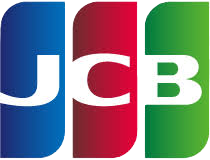Lorem ipsum dolor sit amet, consectetur adipisicing elit, sed do eiusmod tempor incididunt ut labore et dolore magna aliqua. Ut enim ad minim veniam, quis nostrud exercitation ullamco laboris nisi ut aliquip ex ea commodo consequat.
Duis aute irure dolor in reprehenderit in voluptate velit esse cillum dolore eu fugiat nulla pariatur.
**How to Travel with a Paper Map: Rediscover the Art of Analog Navigation**
In today’s digital age, smartphones and GPS have become go-to tools for navigation. However, there’s a timeless charm and practicality to using a paper map. Whether you’re exploring remote regions with spotty internet, venturing off-grid, or simply seeking a nostalgic, tech-free experience, a paper map can be an invaluable travel companion. Here’s a guide on how to navigate confidently using a paper map, ensuring a smooth journey while embracing the art of analog travel.
—
### 1. **Choose the Right Map for Your Journey**
Selecting the right map is essential for effective navigation. Different maps serve different purposes, so consider your destination and the type of travel you’re planning:
– **Road Maps**: Ideal for road trips, providing detailed information on highways, routes, and major cities.
– **Topographic Maps**: Best for hikers and campers, these maps show terrain, elevation, and natural features.
– **City Maps**: Perfect for urban exploration, showing streets, landmarks, and public transportation options.
– **Regional Maps**: Useful for broader overviews, covering larger areas and highlighting main attractions.
Look for maps with a scale that suits your needs, ensuring you have the detail required for accurate navigation.
### 2. **Understand Map Symbols and Legends**
Every map has unique symbols and a legend (or key) to help you interpret it. Spend time studying these details before you set off:
– **Contours and Elevation**: Topographic maps use contour lines to represent elevation. The closer the lines, the steeper the terrain.
– **Road Classifications**: Highways, local roads, and trails are often marked differently. Recognize these symbols to make informed route choices.
– **Landmarks and Icons**: Maps use icons for natural features, landmarks, and points of interest. Knowing these will help you navigate and identify stops along your route.
### 3. **Orient Yourself with the Map**
Before starting, take a moment to orient your map:
– **Use a Compass**: Align the map’s north with the direction indicated by a compass. This ensures that your map matches the actual landscape, making it easier to interpret.
– **Identify Landmarks**: Look for nearby landmarks, like mountains, rivers, or buildings, to confirm your location and direction.
– **Visualize Your Route**: Once oriented, trace your planned route on the map to mentally familiarize yourself with it. This helps you anticipate turns, distances, and any major landmarks along the way.
### 4. **Mark Your Route**
Using a pencil, lightly mark your route. This will help you stay on track without needing to unfold the map constantly. Circle key landmarks, rest stops, or any junctions where you might need to change direction. If you’re venturing off-road, marking your start and end points can be especially helpful if the terrain is challenging.
### 5. **Estimate Distance and Travel Time**
Most maps provide a scale to help estimate distances:
– **Measure the Distance**: Use a ruler or the edge of your finger to gauge the distance between two points based on the map’s scale.
– **Calculate Travel Time**: Depending on your mode of travel (walking, biking, or driving), estimate your travel time. For example, on foot, assume 4-5 kilometers per hour in easy terrain, adjusting for hills or rugged paths.
### 6. **Check Your Bearings Frequently**
As you travel, stop periodically to check your location on the map:
– **Verify Landmarks**: Match landmarks from the map to what you see around you, confirming your position.
– **Use Your Compass**: If you’re in unfamiliar terrain or without clear markers, a compass will help ensure you’re moving in the right direction.
– **Track Progress**: Mark your progress on the map as you go, which can also serve as a record of your journey.
### 7. **Have a Backup Plan**
Traveling with a paper map requires flexibility:
– **Stay Calm if Lost**: If you find yourself off-course, take a deep breath and re-orient the map. Look for recognizable features to reestablish your position.
– **Carry a Second Map**: For more extensive or remote journeys, consider carrying a second map or photocopies as a backup.
– **Know When to Ask for Help**: If you’re in a populated area, don’t hesitate to ask locals for directions.
### 8. **Respect the Map – It’s a Tool, Not a Souvenir**
Paper maps can be fragile. Fold them carefully, avoid getting them wet, and keep them in a plastic bag or map case to protect against the elements. A well-maintained map not only makes navigation easier but also preserves a piece of your journey, perhaps as a keepsake for future trips.
### 9. **Enjoy the Journey**
Traveling with a paper map is about more than just reaching a destination. It’s a chance to slow down, engage with your surroundings, and travel mindfully. Embrace the small challenges that come with analog navigation, and enjoy the sense of accomplishment that comes from successfully reaching your destination without digital assistance.
—
**Conclusion**
In a world dominated by technology, traveling with a paper map offers a refreshing change. It reconnects us with the fundamentals of exploration, allowing for a more immersive and intentional experience. So, next time you set out on an adventure, consider leaving the GPS behind and bringing along a trusty paper map—you might just discover a new appreciation for the journey.
A musician must make music, an artist must paint, a poet must write, if he is to be ultimately at peace with himself. What a man can be, he must be
— Abraham Maslow
Excepteur sint occaecat cupidatat non proident, sunt in culpa qui officia deserunt mollit anim id est laborum. Sed ut perspiciatis unde omnis iste natus error sit voluptatem accusantium doloremque laudantium, totam rem aperiam, eaque ipsa quae ab illo inventore veritatis et quasi architecto beatae vitae dicta sunt explicabo
Why Choose Our Products
Ut enim ad minim veniam, quis nostrud exercitation ullamco laboris nisi ut aliquip ex ea commodo consequat. Duis aute irure dolor in reprehenderit in voluptate velit esse cillum dolore eu fugiat nulla pariatur.


- So we came up with the idea that instead of limiting the lab to a restricted area of the building
- We make it quick, easy and convenient for scheduling to save time
- Our promise is to be respectful of you and your home as if it were our own
- We stand behind our work with a one-year guarantee on all labor
Nemo enim ipsam voluptatem quia voluptas sit aspernatur aut odit aut fugit, sed quia consequuntur magni dolores eos qui ratione voluptatem sequi nesciunt.







kamagra z kanady bez lékařského předpisu
není nutný předpis kamagra
purchase xifaxan generic from canada
online order xifaxan cheap canada pharmacy
online order rifaximin cheap buy online no prescription
cheapest buy rifaximin generic south africa
discount avodart cheap uk
buy avodart us overnight delivery
buying staxyn buy germany
Where to buy staxyn online overnight
purchase itraconazole uk cheap purchase buy
how to buy itraconazole cost at costco
ordering gabapentin canada with no prescription
get gabapentin usa suppliers
ordering fildena cheap next day delivery
purchase fildena australia online generic
online order flexeril cyclobenzaprine generic version
order flexeril cyclobenzaprine uk online
cheapest buy dutasteride cheap in uk
cheapest buy dutasteride generic when will be available
purchase androxal generic work
buy androxal purchase from uk
kamagra prescrire eu medicament
commandez kamagra chez wallmart pour le ramassage
get the best enclomiphene tablets enclomiphene
discount enclomiphene generic where to buy
[…] sildenafil 50 mg pill […]